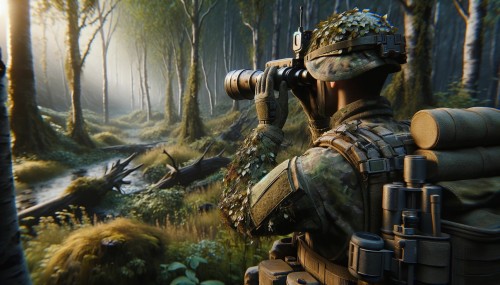Subscribe to Our Social Media For Prompt Post
Laser rangefinders are advanced instruments designed for the precise measurement of distances between two points. These devices generally rely on one of two principal methods: the direct time-of-flight method or the phase shift method. The rangefinder binoculars' capability to provide accurate distance measurements has revolutionized various fields, notably military operations.
Historical Development
The first artillery laser rangefinder, equipped with a ruby laser, marked its inception at the US Army's Pitman-Dunn Laboratory in Frankfort Arsenal, Pennsylvania. Named the XM23, this rangefinder laid the foundation for a series of devices that would see widespread use across military applications. Until the advent of the M1 Abrams tank series in 1978, the ruby laser rangefinder was a standard feature in all main battle tanks used by the US Army. The shift to the Nd:YAG laser later introduced significant improvements in speed and efficiency, leading to its integration into the M1 Abrams tanks and future models.
Advantages and Technological Advances
Precision and Resolution
One of the main benefits of using laser technology for distance measurement is the laser light's shorter wavelength compared to ultrasonic or radar methods. This attribute allows for a more focused beam, resulting in superior spatial resolution. Military-grade rangefinders, which can measure distances of several to tens of kilometers, utilize high-energy laser pulses. Despite the safety measures, these pulses could pose risks to human eyesight, underlining the importance of careful operation.
Diversity in Laser Sources
The evolution of laser rangefinders has seen the adoption of various laser sources, including solid-state, semiconductor diode, fiber, and CO2 lasers. This diversity ensures that military applications can benefit from the most appropriate technology, considering factors such as range, accuracy, and environmental conditions.
Modern Military Applications
Laser Target Designators
Laser target designators have become indispensable in the arsenal of modern warfare, providing critical precision in designating targets for munitions. The ability to encode the laser pulses for increased accuracy ensures that projectiles remain on course, minimizing the detection window and reducing the reaction time of the targeted entity. This strategic advantage is crucial in modern combat scenarios, where speed and accuracy can determine the success of a mission.
Broad Utility and Integration
Today, laser rangefinders are integral to defense forces globally, offering functionalities that extend beyond mere distance measurement to include target speed detection. With ranges between 2 to 25 kilometers, these devices can operate independently or be mounted on vehicles and weapons platforms. Integration with daytime and nighttime vision technologies further enhances their functionality, making them a versatile tool in military operations.
[Link: More about the Laser Range Finding Solutions]
Conclusion
Laser rangefinders have come a long way from their initial development to becoming a staple in modern warfare. Their precision, enhanced by technological advances, plays a vital role in the success of military operations. As technology continues to evolve, the potential applications and capabilities of laser rangefinders are bound to expand, offering even greater advantages in both military and civilian contexts.
Post time: Mar-20-2024

